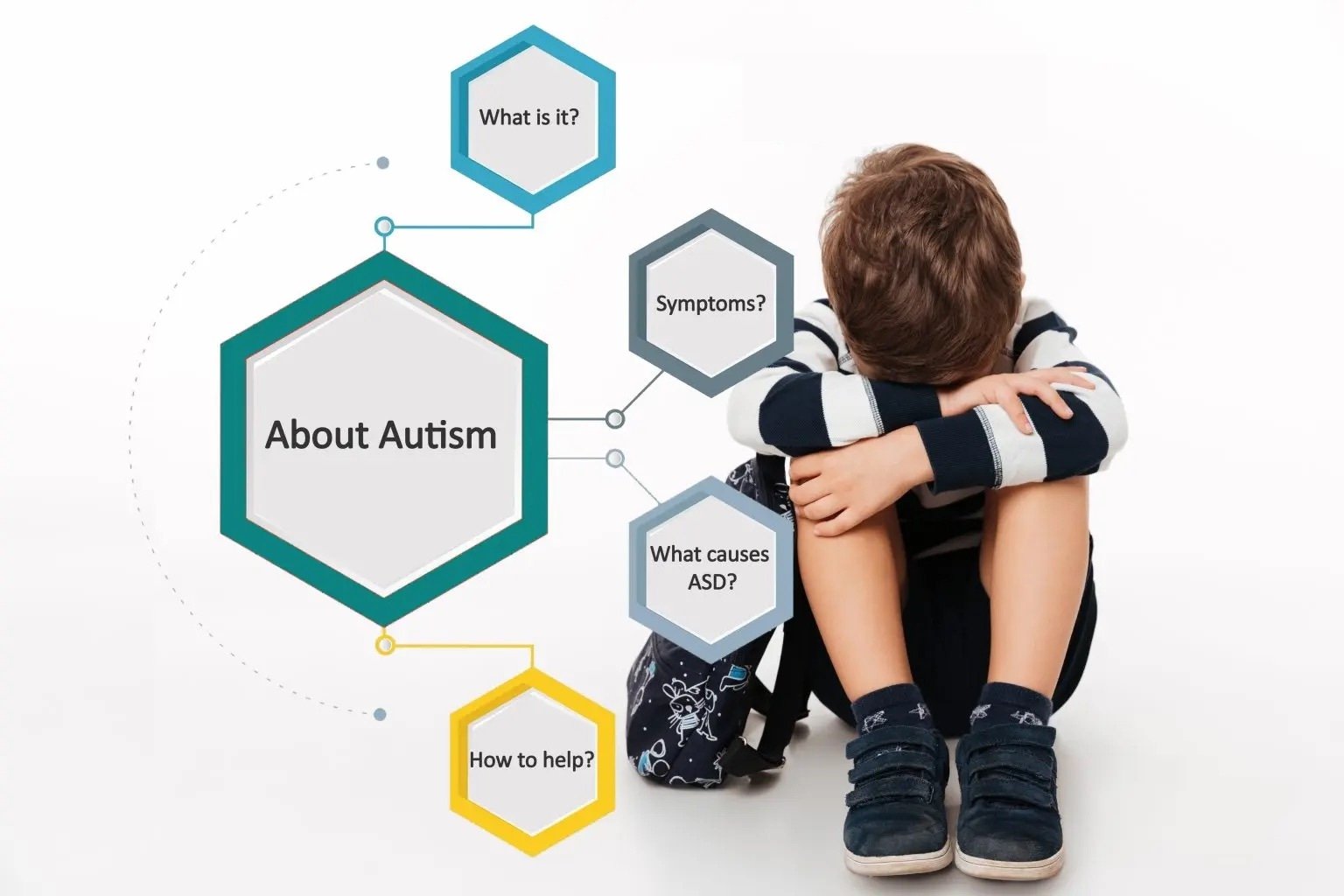Introduction to Autism: Understanding the Basics
Let’s level-set on the basics…
Understanding autism is the first step towards creating a supportive environment for autistic children. Autism, also known as Autism Spectrum Disorder (ASD), is a developmental disorder that affects communication, behavior, and social interaction. This comprehensive guide aims to provide parents with a foundational understanding of autism, dispel common myths, and offer practical insights on how to support their autistic child.
Image Source: https://www.safetynet-health.com/about-autism-asd/
What is Autism?
Autism Spectrum Disorder (ASD) encompasses a range of conditions characterized by challenges with social skills, repetitive behaviors, speech, and nonverbal communication. The term "spectrum" reflects the wide variation in challenges and strengths possessed by each person with autism. Some individuals might need significant support in their daily lives, while others might require less assistance.
Symptoms of Autism
Common symptoms of autism include:
Communication Difficulties :: Delayed speech development, challenges with conversational skills, and difficulty understanding non-verbal cues.
Social Interaction Challenges :: Difficulty making eye contact, understanding social norms, and forming relationships.
Repetitive Behaviors :: Repeating actions or phrases, strong adherence to routines, and intense focus on specific interests.
Every autistic child is unique, and symptoms can vary widely from one individual to another. Recognizing these signs early can lead to a timely diagnosis and intervention.
Image Source: https://www.autismbc.ca/blog/what-is-autism/
Dispelling Common Myths
Myth 1 :: Autism is caused by bad parenting.
Autism is a neurological condition, and its causes are rooted in genetic and environmental factors, not parenting styles or behaviors.
Myth 2 :: Autistic individuals lack empathy.
While autistic individuals might struggle to express emotions traditionally, many are deeply empathetic and caring once you understand their unique ways of communicating.
Myth 3 :: Vaccinations cause autism.
One of the most persistent myths is that vaccines, particularly the MMR (measles, mumps, and rubella) vaccine, cause autism. This misconception originated from a now-debunked study published in 1998, which has since been retracted due to serious procedural errors and ethical violations. Extensive research by numerous reputable organizations, including the Centers for Disease Control and Prevention (CDC) and the World Health Organization (WHO), has found no link between vaccines and autism. Vaccinations are crucial for preventing serious diseases and ensuring public health.
Causes of Autism
The exact cause of autism remains unknown, but research suggests that a combination of genetic and environmental factors plays a role.
Genetic Factors
Certain genetic mutations and conditions are associated with an increased risk of autism. For instance, siblings of autistic individuals are more likely to be diagnosed with the disorder.
Environmental Factors
Factors such as advanced parental age, prenatal exposure to certain substances, and complications during birth may increase the risk of autism. However, these factors do not cause autism independently but may contribute when combined with genetic predispositions.
Diagnosis & Early Intervention
Diagnosis
Autism is usually diagnosed by observing behavior and development. Pediatricians, psychologists, and neurologists often work together to assess and diagnose autism through standardized tests and parental interviews.
Early Intervention
Early intervention programs are crucial for improving outcomes for autistic children. These programs can include speech therapy, occupational therapy, and behavioral interventions tailored to the child's needs.
Prevalence & Statistics
Autism affects approximately 1 in 36 children in the United States. This rate has increased over the past few decades, partly due to better awareness, improved diagnostic methods, and changes in diagnostic criteria.
Key Statistics
Gender Differences :: Autism is about 4 times more common in boys than in girls. While the reasons for this disparity are not fully understood, it highlights the need for increased awareness and tailored approaches for diagnosing autism in girls, who may present symptoms differently.
Age of Diagnosis :: Most children are diagnosed with autism after the age of 4, although reliable diagnoses can often be made as early as age 2. Early diagnosis and intervention are critical for improving outcomes.
Global Prevalence :: The prevalence of autism varies worldwide. In high-income countries, the rates are generally higher, reflecting greater awareness and better diagnostic practices. However, autism is a global condition affecting individuals across all cultures and socioeconomic backgrounds.
Understanding the Numbers
Increased Diagnosis Rates
The increase in autism diagnoses over the years can be attributed to several factors, including broader diagnostic criteria, increased awareness among parents and professionals, and better screening tools. This does not necessarily mean that autism itself is becoming more common, but rather that we are getting better at identifying it.
Impact on Families and Society
The growing recognition of autism's prevalence has led to more resources and support for families. Early intervention programs, educational accommodations, and community support services have become more widely available, helping autistic individuals lead fulfilling lives.
Supporting Your Autistic Child
As a parent, you play a crucial role in your child's development. Here are some practical steps you can take:
Seek Early Intervention :: Early diagnosis and intervention can significantly improve outcomes. Consult with healthcare professionals to understand the best approaches for your child.
Create a Supportive Environment :: Establish routines and create a sensory-friendly home environment. Consistency and predictability can help reduce anxiety and improve behavior.
Advocate for Your Child :: Work closely with educators and therapists to ensure your child receives the necessary support and accommodations.
Promote Inclusivity :: Encourage social interactions and participation in group activities in a supportive and understanding environment.
Understanding is Supporting…
Understanding autism is the first step in supporting your autistic child. Parents can create a nurturing environment that fosters growth and development by learning about the symptoms, causes, and prevalence, and dispelling common myths. Stay tuned for our next articles, where we will discuss local support groups in various cities to help parents find the resources they need.





